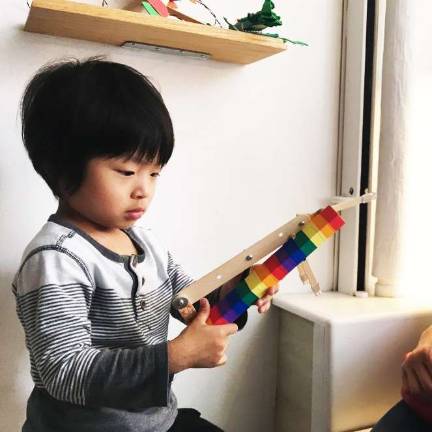shaping engineers



Alex, 9, described the the light saber-wielding robot he was building using words like “microchips” and “hummingbirds” and engineering terminology that would make an adult’s head spin. His knowledge was impressive, but par for the course at the Brooklyn Robot Foundry.
For parents struggling to find a meaningful way to occupy their young children during the summer and beyond, the Robot Foundry makes the task a little easier, providing a selection of robotics, engineering, circuitry, design and programming classes. Started in 2011, it offers weeklong summer sessions, after-school programs and one-time classes for 2-year-olds through seventh graders. The original Brooklyn location has quickly grown into studios in Brooklyn, Tribeca and the Upper East Side.
Each class focuses on building a certain project — a puppet, a car or a boat, for example — and each project is associated with a real world lesson, introducing concepts like magnet switches, parallel circuits and water pumps. In addition to being educational, sessions are also designed to be fun. Builders have access to any creative child’s dream: an abundance of colored paper, glitter, markers and, of course, googly eyes.
“All of the kids make the same skeleton of their robots, but then we decorate and the kids turn it into their own thing,” said Josh Brechner, who works in marketing and design, but also leads classes. “So, if we’re making cars, one kid may make the Batmobile, one will make a limo, and one will turn it into a subway.... It’s a whole other world in terms of what the kids create.”
The Brooklyn Robot Foundry is the brainchild of owner Jenny Young and co-founder David Van Esselstyn, both of whom grew up building small projects in their free time. “I was always in the garage making things with my dad with little scraps of wood and leftover things,” Young said. “I think I look at the world slightly differently than people who didn’t have that same upbringing. I think a lot about taking things apart and putting them back together.... It’s made me have a questioning personality.”
Noticing that children in New York City often don’t have a space to work with their hands in the same way as those growing up in suburbs or small towns, Young and Van Esselstyn set out to create “a garage for city kids to take things apart, learn how things go together, and build free-form things.”
“The goal of the Brooklyn Robot Foundry is to make kids feel comfortable and excited about failure,” said Young, citing the focus on standardized testing and the emphasis on the “right” answer as flaws in the public school system. “I’ve never met one engineer who’s designed [a product] once, thrown it out on the assembly line and just manufactured it. That’s not how it works.”
Young wants the Robot Foundry’s classes to demonstrate the importance of trial and error, and stand in contrast to less dynamic and more traditional lessons. “If you aren’t afraid of failure you will do things that are outside your comfort zone, and that ... makes smarter, more free individuals,” she said.
Nine-year-old Alex’s enthusiasm validates this approach. “Here you get to build stuff,” he said. “In school you only get to learn.” He likes the Brooklyn Robot Foundry because he can learn while using his hands and being creative. “I want to be an engineer or a scientist or an astronaut,” he said.
The emphasis on experimentation makes the institution a particularly friendly environment for children with special needs. “We have a lot of kids who are on the spectrum or who have ADD or ADHD, and when you’re in a typical classroom it’s really hard for a child with any type of special needs to be able to sit down and listen and answer questions when they’re told,” Young said. She recalled a conversation with the mother of a boy who had struggled in mainstream classrooms: “His mother said, ‘You have made him feel more confident in his own ability as a little person, and, because of the Brooklyn Robot Foundry, he is doing so much better in school because he is feeling happier about himself.’”
Another goal of the program is to promote interest in science, technology, engineering and mathematics (STEM) among young girls. “I’m a female and I definitely get treated as if there’s no way that I can be an engineer, and it feels awful,” Young said. “I was thinking, what can I do to combat this and show people that there are women who are in STEM and do really fascinating and awesome things?” Her solution was to launch a monthly family lecture series that showcases women with careers in STEM.
Ultimately, Young and her colleagues want to encourage children to pursue whatever interests them without fear of failure. “When we have a new group of kids we ask them if they’ve ever built a robot before and if they think that they could build a robot. I think that, through film and media, we often have an idea that robots are very high-tech and sci-fi and very complicated, but the reality is that robots are very simple and easy to make,” Brechner said. “It’s really important to show kids at an early age that they have that built-in capacity, so that when they consider learning more in STEM fields they know it’s a real possibility for them.”